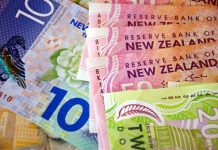Markets
In the run-up to the release of the US services ISM, (US) equity futures/markets yesterday fell prey to a tentative risk-off correction. In particular some parts of the tech sector apparently felt some vertigo after recent record race in the likes of the S&P and the Nasdaq. Safe haven flows supported Treasuries. A soft (but not outright weak) US services ISM pointed in the same direction. The headline index eased slightly more than expected (from 53.3 to 52.6). Employment also unexpectedly eased below the 50 mark (48.0 from 50.5). However, business activity (57.2) and orders remained strong. Price paid eased to 58.6, but clearly suggest ongoing price rises. Yields briefly spiked further south upon the release, but stabilization kicked in soon. At the end of the day, US yields eased between 4.4 bps (2-y) and 6.1 bps (30-y). The outperformance of the long end suggests that the risk-off was at least as much of a driver as the softer ISM. Also interesting the US 10-y real yield extended its correction below 2.0% (1.82%), but for now this doesn’t help risk assets (cf infra). German Bunds even outperformed Treasuries, declining between 5.2 bps (2-y) and 8.0 bps (30-y) even as losses on European equity markets were much more contained compared to the US (Eurostoxx 50 -0.4%). The dollar also briefly spike lower upon the ISM release, but in the end daily changes were limited (DXY 103.8; EUR/USD 1.0857). The yen slightly outperformed with USD/JPY closing at 150.05.
Asian equity markets this morning mostly ignore the correction on WS yesterday as investors look out for more concrete measures from Chinese authorities to reach the ambitiously set 5.0% target. US yields gain marginally after yesterday’s setback. Later today, the US ADP labour market report and the JOLTS job openings might give some insight in strength of the labour market ahead of Friday’s payrolls. However, the market focus will be on Fed Chair Powell’s testimony before the House Financial Services Committee. Given recent data, we assume the Fed Chair has every reason to hold the line that the Fed is in no rush to cut interest rates until it has additional evidence that (underlying) inflation is cooling further, that growth eases enough to bring supply and demand in balance and that the labour market cools to a degree that guarantees wage growth in line with productivity. Such a message should help to put a bottom for yields, even in case of slightly milder than expected activity data. In the UK, markets are keen to see how much stimulus (tax cuts) Fin Min Hunt’s spring budget will provide in the run-up to the upcoming elections. Will it be strong enough for the BoE to take a more cautious stance on policy easing and be able to unlock the stalemate in sterling?
News & Views
The Reserve Bank of New Zealand’s chief economist Conway said the policy rate could be cut sooner than expected if the Federal Reserve begins to ease later this year. The kiwi central bank last week projected no change in the 5.5% rate until 2025, but these forecasts assume a constant NZD exchange rate. If the Fed starts easing (probably around the middle of the year), this would cause the NZD to appreciate and bring down inflationary pressures – all else equal. Conway says this “wiggle room” is limited though. The chief economist is encouraged by the declines in core inflation and business inflation expectations but highlighted the still-high levels of price pressures anticipated by households remain a risk. CPI in Q4 last year eased to 4.7% compared to the RBNZ’s 1-3% target range. The kiwi dollar’s drop on Conway’s comments was temporary. NZD/USD is currently trading a tad higher just south of 0.61.
Australian Q4 GDP growth printed bang in line with expectations. Quarterly dynamics came in at 0.2%. Growth slowed down over every quarter in 2023. Compared to the same period a year ago, GDP is 1.5% bigger. The Australian Bureau of Statistic’s head pointed at government spending (0.6% q/q) and private business investment (0.7%, supported by non-dwelling construction) as the main drivers. Net exports contributed 0.6% mainly on the account of faltering imports (-3.4% q/q). Household spending was subdued, rising a meagre 0.1% in the December quarter. All categories showed net increases but the ABS noted a shift as spending in discretionary areas was wound back while households upped their spending on essential items like electricity, rents and food. The Australian dollar rises this morning in lockstep with its NZD neighbour. Though that’s mostly a general USD move rather than AUD strength. AUD/USD trades around 0.652.














